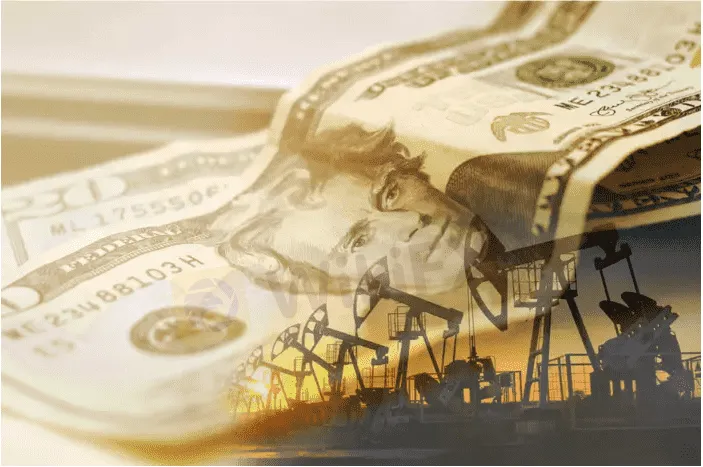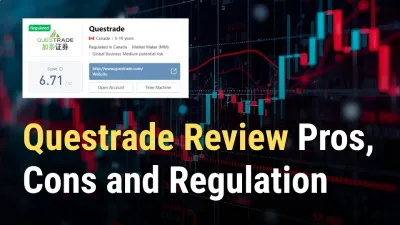简体中文
繁體中文
English
Pусский
日本語
ภาษาไทย
Tiếng Việt
Bahasa Indonesia
Español
हिन्दी
Filippiiniläinen
Français
Deutsch
Português
Türkçe
한국어
العربية
Oil Prices and Currency Pairs
Abstract:One place we can see the connection between crude oil prices and forex trading is in the case of nations whose economies depend strongly on oil exports.

From 2014, when oil prices started slumping, big oil exporters like Russia, Canada and Brazil were threatened with recessions. Roughly 65% of Russia‘s exports were crude oil in 2014 and, as a result, the country entered a recession the following year, which wasn’t helped by the sanctions imposed by Western countries in response to their invasion of Crimea.
Its not only in oil-dependent nations that the economy is affected by changes in commodity prices. The selling contagion in 2014 went beyond oil to other commodities, which started to bind together oil prices with non-oil-dependent economies. At this time, there were concerns about deflation, which led to the European Central Bank (ECB) initiating quantitative easing in March 2015 as a way of combatting it, thus impacting the relationship between many currency pairs.
Oil prices are also a big contributor to inflation, and this tightens the bond between oil and the economy even more. Oil prices are quoted in US dollars, which forges a special relationship between the American currency and oil prices. Whenever oil prices shift, or dollar values change, the dollar currency pairs have to re-adjust. Lets look at how the relationship between oil prices and currency has proved relevant in 2022, when Russian oil has been strongly sanctioned, and at how it touches on popular currency pairs like EUR/USD.
USD
America boosted its crude oil production in 2020 but the dollar did not suffer when oil prices dropped. One reason is that the energy sector is not the only contributor to US GDP. The economy is enriched from many different sources as well. Additionally, we must also consider that America‘s economic growth has outdone its peers’ in recent years, which could have a knock-on effect on forex trading prices.
Readers who are involved in forex trading will know that July 2022 saw the EUR/USD pair fall down to parity for the first time in 20 years. There were a few reasons why the dollar asserted itself so strongly against the European currency, and commodity prices was among them. The eurozone was worried Russia would cut off its gas supplies, which could spur off a recession, so the European currency was less in demand.
The persistence of the Ukraine conflict and its resultant sanctions, which led to a big spike in oil prices, ended up helping the US dollar because of its safe haven appeal in times of economic uncertainty. Looking toward the second half of 2022, “It is not difficult to put together a case in which the euro could fall further”, says Jane Foley of Rabobank.
Commodity-Based Currencies
People interested in forex trading with the USD/CAD currency pair have a special reason to keep an eye on the arena of oil trading. Canada was the fifth biggest oil exporter in the world in 2019. When oil prices are high, Canada will earn more American dollars for every barrel it sells to the US.
Therefore, the supply of American currency in the country will grow relative to the supply of Canadian currency, and so the CAD tends to appreciate relative to the USD. When oil prices fall, the supply of USD relative to CAD can drop, and the CAD could depreciate relative to the USD.
If we look at the Russian ruble this year, we see again the power of oil to influence currency values. At the beginning of April, the ruble was worth less than an American penny due to the harsh sanctions Russia was having to weather. By the end of June, though, the ruble had gained a massive 45% for the year so far.
This was surprising because normally wed expect the currency of a heavily sanctioned nation to suffer as a result of the departure of trade capital from the economy. But, largely because of skyrocketing oil prices, and the fact that Russia is a major source of oil, the currency experienced this elevation.
“Even though there is a drop in the volume of Russian exports due to embargoes and sanctioning, the increase in commodity prices more than compensates for these drops”, explains Tatiana Orlova of Oxford Economics.
Summing Up
If you‘re part of the forex trading world, keep up with the progress of oil embargoes in Europe as well as with the path oil prices take in the near future. Another big factor in the forex world is the comparative tightness of monetary policy in one nation versus another, which has been a reason for the USD’s strength in 2022.
It remains to be seen if the dollar can keep up its strong showing this year and continue to dominate its partners, or if it may be due to come back to ground. Either way, the resulting volatility for both oil trading and forex trading prices could provide a hotbed of opportunity and risks for CFD traders.

Disclaimer:
The views in this article only represent the author's personal views, and do not constitute investment advice on this platform. This platform does not guarantee the accuracy, completeness and timeliness of the information in the article, and will not be liable for any loss caused by the use of or reliance on the information in the article.
Read more

Seaprimecapitals Withdrawal Problems: A Complete Guide to Risks and User Experiences
Worries about Seaprimecapitals withdrawal problems and possible Seaprimecapitals withdrawal delay are important for any trader. Being able to get your money quickly and reliably is the foundation of trust between a trader and their broker. When questions come up about this basic process, it's important to look into what's causing them. This guide will tackle these concerns head-on, giving you a clear, fact-based look at Seaprimecapitals' withdrawal processes, user experiences, and trading conditions. Most importantly, we'll connect these real-world issues to the single most important factor behind them: whether the broker is properly regulated. Understanding this connection is key to figuring out the real risk to your capital and making a smart decision.

iFX Brokers Review: Do Traders Face Withdrawal Issues, Deposit Credit Failures & Free Coupon Mess?
Have you had to pay several fees at iFX Brokers? Had your trading profit been transferred to a scamming website, causing you losses? Failed to receive withdrawals from your iFX Brokers trading account? Has your deposit failed to reflect in your trading account? Got deceived in the name of a free coupon? Did the broker officials not help you in resolving your queries? Your problems resonate with many of your fellow traders at iFX Brokers. In this iFX Brokers review article, we have explained these problems and attached traders’ screenshots. Read on!

NinjaTrader Exposed: Why Traders are Calling Out NinjaTrader’s Lifetime Plan & Chart Data
Did NinjaTrader onboard you in the name of the Lifetime Plan, but its ordinary customer service left you in a poor trading state? Do you witness price chart-related discrepancies on the NinjaTrader app? Did you have to go through numerous identity and address proof checks for account approval? These problems occupy much of the NinjaTrader review online. In this article, we have discussed these through complaint screenshots. Take a look!

Questrade Review Pros, Cons and Regulation
Is Questrade legit? Yes—CIRO regulated broker offering stocks, ETFs, forex, CFDs, bonds, and more with low fees and modern platforms.
WikiFX Broker
Latest News
GGCC Bonus and Promotions: A Data-Driven Analysis for Experienced Traders
Close Up With WikiFX —— Take A Close Look At Amillex
CapEx Spending On AI Is Masking Economic Weakness
Questrade Review Pros, Cons and Regulation
AccentForex Review: Is It Safe to Invest or Scam?
Prop Firm Tradeify Signs ‘The Nuke’ as Global Brand Ambassador
In-Depth Review of INZO Deposits, Withdrawals, and Fund Handling
Voices of the Golden Insight Award Jury | George Georgiou, the Co-Founder of Dynamic Works
Is Your Money Safe? The Capital.com Withdrawal Mystery Revealed
Is the AI Boom About to Break? Are We Entering the Next Tech Bubble?
Currency Calculator



